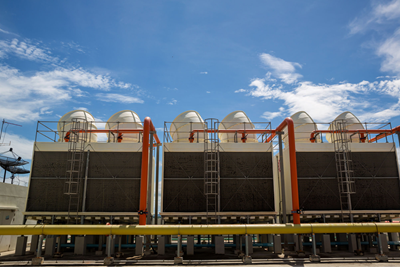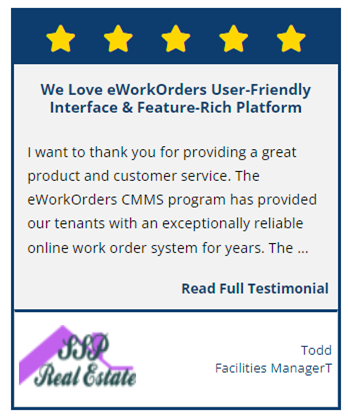 Cooling towers are critical components in many industrial and commercial facilities, providing an important function in cooling water utilized in many operations. However, because cooling towers are constantly exposed to water and high temperatures, they are subject to a range of issues that can influence their efficiency and reliability. Corrosion, scaling, microbiological growth, leaks, fan issues, control system issues, clogging, noise, vibration, and electrical issues, as well as safety dangers, are some of the most typical problems. These flaws might not only limit cooling tower effectiveness but also lead to costly repairs or replacements. In this article, we’ll look at some of the most frequent cooling tower problems and how regular maintenance may help prevent and resolve them.
Cooling towers are critical components in many industrial and commercial facilities, providing an important function in cooling water utilized in many operations. However, because cooling towers are constantly exposed to water and high temperatures, they are subject to a range of issues that can influence their efficiency and reliability. Corrosion, scaling, microbiological growth, leaks, fan issues, control system issues, clogging, noise, vibration, and electrical issues, as well as safety dangers, are some of the most typical problems. These flaws might not only limit cooling tower effectiveness but also lead to costly repairs or replacements. In this article, we’ll look at some of the most frequent cooling tower problems and how regular maintenance may help prevent and resolve them.
What Is A Cooling Towner?

A cooling tower is a big piece of equipment used to cool water by releasing heat into the air. Cooling towers operate by moving heated water via a heat exchanger, where it comes into touch with cool air. The heat from the water is transferred to the air, which is subsequently released by the cooling tower. The cooled water is then recycled back into the system to be reused. Cooling towers are classified into several varieties, including natural draft, forced draft, induced draft, counterflow, crossflow, and others, each having its own distinct design and operation. They are essential in many industrial processes that produce heat, such as power plants, chemical processing plants, oil refineries, HVAC systems, and data centers, as well as commercial buildings such as hotels and office buildings for air conditioning.
Cooling towers are susceptible to a variety of issues that hinder their operation. Without proper system maintenance, cooling towers will become damaged and less effective at heat exchange, resulting in performance and efficiency losses. However, with consistent maintenance and proper water treatment, you can keep your operations running, expenses down, and cooling efficiencies high.
Types Of Cooling Towers
There are several types of cooling towers, each designed to suit different needs and applications. The most common types of cooling towers include:
Natural draft cooling towers: The water and air in these cooling towers are circulated by natural air currents. They are typically tall and have a large, open structure. Natural draft cooling towers are mostly used in large industrial facilities such as power plants and chemical plants.
Forced draft cooling towers: Fans are used in these cooling towers to circulate the water and air. Natural draft cooling towers are usually shorter and more compact. Forced draft cooling towers are widely utilized in commercial and industrial applications such as HVAC systems and data centers.
Induced draft cooling towers: Fans are used in these cooling towers to pull air through the tower. They are similar to forced draft cooling towers in appearance, but the fan is positioned at the top of the tower. Large industrial facilities, such as power plants and petrochemical plants, frequently use induced draft cooling towers.
Counterflow cooling towers: The water in these cooling towers flows vertically upwards, while the air flows vertically below. This design provides for a more efficient heat exchange operation and is often utilized in large industrial facilities such as power stations and petrochemical plants.
Crossflow cooling towers: The water in these cooling towers flows horizontally, while the air flows vertically. This design provides for a more effective heat exchange process and is often utilized in commercial and industrial buildings such as HVAC systems and data centers.
Cooling towers are essential in many industrial processes that generate heat and are used to dissipate the heat into the atmosphere. They are utilized in power plants, chemical processing plants, oil refineries, HVAC systems, and data centers. They are also utilized for air conditioning in many commercial buildings such as hotels and office buildings.
Common Issues & Solutions
Corrosion and scaling: Because of their continual exposure to water and high temperatures, cooling towers are prone to corrosion and scaling. Proper maintenance, such as regular cleaning and the use of corrosion inhibitors, can help prevent and address these issues.
Microbial growth: Cooling towers are also susceptible to microbial growth, which can result in bad odors, clogged piping, and decreased efficiency. Regular cleaning and disinfection can help avoid and address this issue.
Leaks: Because of the constant pressure and movement of water, cooling towers are prone to leaks. Regular inspections and maintenance can aid in the detection and repair of leaks before they cause major harm.
Fan problems: Fans circulate water and air in cooling towers. Cleaning and lubricating fan motors on a regular basis can help avoid and address fan issues.
Control system issues: Cooling towers rely on control systems to regulate the flow of water and air. Regular maintenance and testing can help prevent and address control system issues such as faulty sensors or malfunctioning valves.
Water treatment: It is important to maintain the right chemical balance in the cooling tower water to prevent corrosion and scaling. Regular water treatment will help in maintaining the proper pH and mineral levels in the water.
Clogging: Debris, such as leaves, mud, and algae, can clog cooling towers. This can obstruct the flow of water and air, lowering the cooling tower’s efficiency. Cleaning and inspections on a regular basis can help avoid and treat clogs.
Noise: The movement of water and air, as well as the functioning of fans and other mechanical components, can cause noise in cooling towers. Regular maintenance and inspections can help identify and address sources of noise, such as loose or worn parts.
Vibration: The functioning of fans and other mechanical components in cooling towers can cause vibration. Vibration can cause wear and tear on cooling tower components as well as create noise. Regular maintenance and inspections can help identify and address sources of vibration.
Electrical issues: The fans and other mechanical components of cooling towers are powered by electricity. Regular maintenance and inspections can help in the detection and resolution of electrical issues such as loose connections or defective wiring.
Safety hazards: Because of the combination of water and electricity, cooling towers can be dangerous. Regular safety inspections can assist in identifying and correcting problems such as slick surfaces or exposed wires.
Why Preventive Maintenance Is Important
Preventive maintenance is essential for ensuring cooling towers’ long-term efficiency and reliability. Cleaning, inspections, and repairs performed on a regular basis can help identify and address any concerns before they cause considerable damage or disruption. This can help to guarantee that the cooling tower is operating at maximum efficiency, saving downtime and increasing the equipment’s lifespan.
A Computerized Maintenance Management System (CMMS) is an important tool for implementing a cooling tower preventative maintenance program. It allows for the creation of a preventative maintenance schedule, in which tasks like cleaning, inspections, and repairs are scheduled ahead of time. It can also help with inventory management and ordering of necessary parts, tools, and equipment. A CMMS can assist identify patterns and trends by keeping a thorough record of all maintenance activities, which can inform future maintenance decisions and increase overall efficiency. This also enables for the tracking of labor, resources, and maintenance costs, which can help in cost control. Implementing a preventative maintenance program with the help of a CMMS can help to save money in the long run.